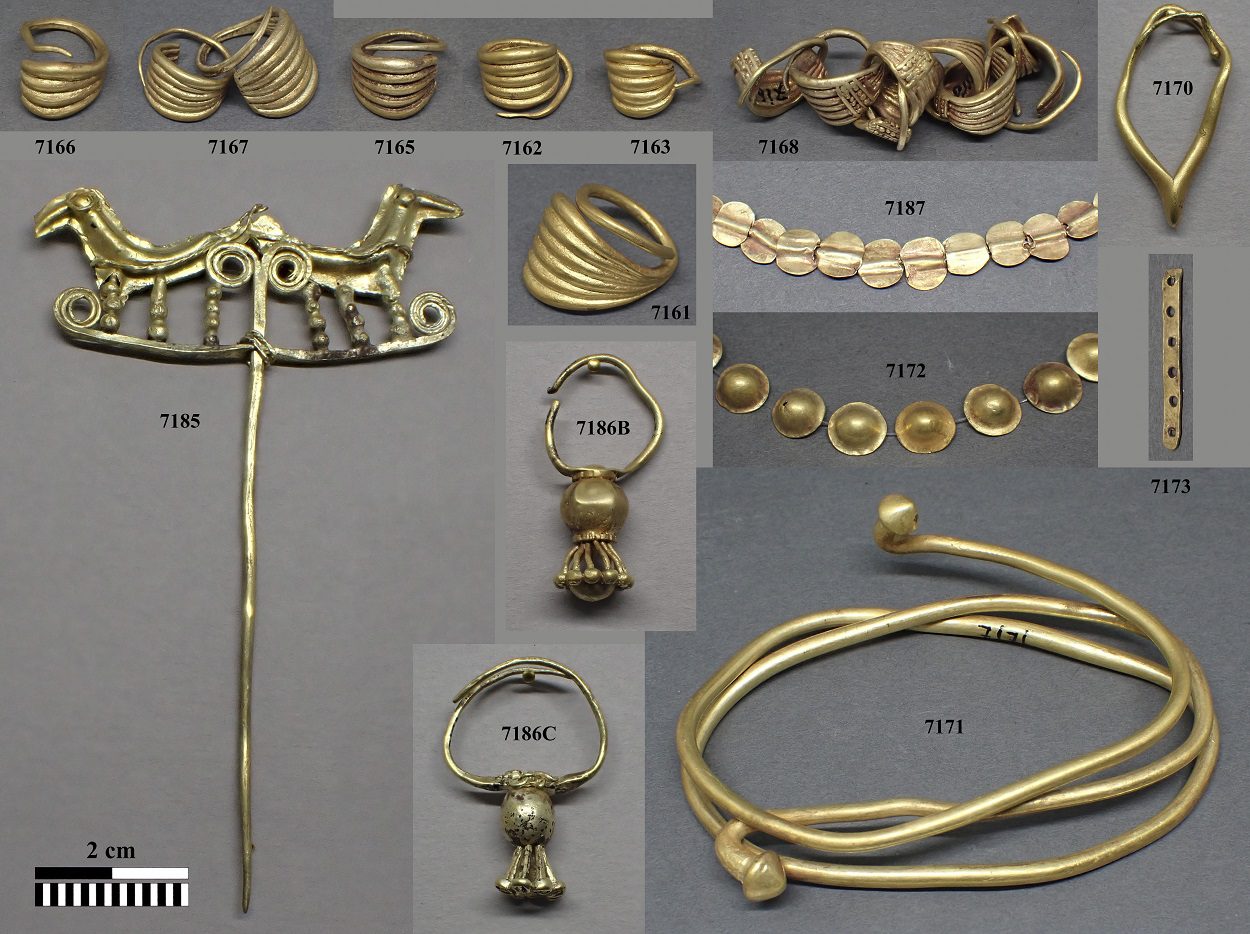Scientists, using an innovative mobile laser method have determined that gold found in ancient Troy, Poliochni and Ur had the same origin.
Researchers from several institutions, led by Ernst Pernicka, scientific director of the Curt-Engelhorn Center for Archaeometry (CEZA) at the Reiss-Engelhorn Museums in Mannheim and director of the University of Tübingen’s Troy project, applied a portable laser ablation system (pLA) to analyse samples of Bronze Age jewellery found in Troy and Poliochni.
Troy (also called Ilios or Ilion and Ilium) in present-day Hisarlik in Canakkale, Turkey – comprises of a multi-period site, now partially buried in an artificial tell illustrating the gradual development of the city in north-western Asia Minor. Troy was the famous setting for Homer’s Iliad (one of the oldest extant works of Western literature) that tells the story of the city being sieged by a coalition of Greek states.
Poliochne, often cited under its modern name Poliochni, was an ancient settlement on the east coast of the island of Lemnos. It was settled in the Late Chalcolithic and earliest Aegean Bronze Age, and is believed to be one of the most ancient towns in Europe, preceding the construction of Troy I.
Ever since Heinrich Schliemann discovered Priam’s Treasure in Troy in 1873, the origin of the gold has been a mystery. Professor Pernicka and the international team has now been able to prove that the treasure derived from secondary deposits such as rivers, and its chemical composition is not only identical with that of gold objects from the settlement of Poliochni on Lemnos and from the royal tombs in Ur in Mesopotamia, but also with that of objects from Georgia. “This means there must have been trade links between these far-flung regions,” says Pernicka.
A study, now published in the Journal of Archaeological Science, applied portable laser ablation system (pLA), that enabled the researchers to undertake minimally invasive extraction of samples. The laser melts a small, microscopic hole in the samples, which was then analysed for the composition using mass spectrometry.
In total, the researchers studied 61 artefacts using this method, all originating from the Early Bronze Age between 2,500 and 2,000 BC.
Depending on the alloy, scientists can create a distinct chemical profile for the finds and use this to draw conclusions. For instance, the high concentrations of zinc, palladium and platinum in the jewellery from Troy are a clear sign that the gold was washed out of a river in the form of gold dust.
The researchers were also able to show that the jewellery was mass-produced by workshops and not just as individual items. This is the only reasonable explanation, for example, for the identical amount of platinum and palladium being present in the gold discs in necklaces of the same design that were found at different sites.
Experts have long debated the origin of the gold from the royal tombs of Ur as well. There are no natural sources of gold in Mesopotamia – so West Anatolia, which was also the site of Troy, was believed to be a possible source. “However, other quite different regions which are known to have had strong trade links with Ur have also been considered,” says Pernicka.
Comparative archaeological studies have shown strikingly similar items that these were used in the Early Bronze Age across a large geographic area, stretching from the Aegean to the Indus valley in what is now Pakistan: official seals and standardized weights, earrings with the same spiral patterns, gemstones such as lapis lazuli or the shimmering carnelian. “The new archaeometric data open up a sound and global framework for our models of societies, their networks and the significance of resources around 4500 years ago,” says Horejs.
In conclusion, the precise origin of the gold of Troy could not be determined, however, Pernicka says, “If we observe the share of trace elements in the gold from Troy, Poliochni and Ur, Bronze Age gold from Georgia correlates the closest with the stated find sites. But we still lack data and studies from other regions and from other objects to establish this assumption.”
https://doi.org/10.1016/j.jas.2022.105694
Header Image Credit : Christoph Schwall / Austrian Archaeological Institute (ÖAI) Vienna







